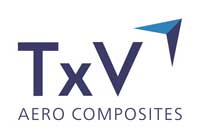Aerospace: Victrex/Tri-Mack jv for PAEK; Arkema ups capacity of PEKK; MTI/Airbus tie-up for laser protection

With an estimated 35,000 new aircraft to be launched in the next 20 years, the aerospace industry is embracing thermoplastic composites as a cost-effective solution to support this growth, said Will Kain, President of Tri-Mack Plastics Manufacturing Corporation, a joint venture partner with UK-based Victrex.
The companies have established TxV Aero Composites to accelerate the commercial adoption of polyketone (PAEK) composite
 applications within the aerospace industry, through the manufacture of parts utilising new processes. The multi-million dollar investment includes the establishment of a new US-based manufacturing facility, due to be completed in 2017.
applications within the aerospace industry, through the manufacture of parts utilising new processes. The multi-million dollar investment includes the establishment of a new US-based manufacturing facility, due to be completed in 2017.
The new company will be a total solutions provider for polyketone composites, from concept development through commercialisation. It will offer a range of PAEK composites, from custom laminates to pre-formed composite inserts for hybrid moulding processes, as well as finished composite parts and complete over-moulded hybrid composite components and assemblies. These products can deliver weight savings of up to 60%, over conventional metallic solutions, and offer continuous manufacturing processes and cycle times measured in minutes versus hours for thermoset alternatives.
Commercial aircraft use thousands of brackets and system attachments from the cockpit to the tail of the plane. The total amount of these components on an aircraft can add a significant amount of cost and weight especially if they are made from machined metal or thermoset layups. Victrex says its PAEK-based components can be manufactured more efficiently than conventional thermoset alternatives, and can deliver significant weight savings compared to stainless steel and titanium while offering equivalent or better mechanical properties such as strength, stiffness, and fatigue. It also has an Aerospace Loaded Brackets programme that is able to offer new forms and components, alongside supplying materials, and build a new supply chain to address the needs of the industry.

Elsewhere, French materials firm Arkema has doubled the capacity in France of its Kepstan PEKK (polyetherketoneketone) product line, the latest addition to its PAEK family. It has also confirmed its future investment at its Mobile site (Alabama, US) in a world-scale PEKK plant expected to come on stream in the second half of 2018.
Among its benefits, PEKK offers resistance to extreme environments, like those in aerospace and oil exploration, with its high melting point (300°C to 360°C depending on the grade) and provides resistance to chemicals and abrasion. And it is being considered in the fuselage design for a new generation of commercial aircraft.
PEKK was invented in the 1960s as part of the Apollo space programme in the US. But commercial production requires a complex process and heavy financial investment. Following the 2009 acquisition of American company Oxford Performance Materials (OPM), Arkema took up the PEKK challenge. In partnership with chemicals company PCAS, the group set up Europe’s first industrial production facility for this polymer in France. After several years of investment in R&D, the manufacturing process is now commercial. A second larger production unit is currently under development in the US.
Apart from the aerospace and offshore oil and gas markets, its use is being considered for additive manufacturing (3D printing) for small and medium runs.
Meanwhile, Canada’s Metamaterial Technologies Inc. (MTI) and
 its optical filters division, Lamda Guard, have entered into a new agreement with aircraft manufacturer Airbus to commercialise its laser protection product metaAIR, for aviation. In 2014, MTI signed its first agreement with Airbus to test and tailor metaAIR, which is a flexible metamaterial optical filter, engineered to protect vision against harmful laser beams aimed at aircraft.
its optical filters division, Lamda Guard, have entered into a new agreement with aircraft manufacturer Airbus to commercialise its laser protection product metaAIR, for aviation. In 2014, MTI signed its first agreement with Airbus to test and tailor metaAIR, which is a flexible metamaterial optical filter, engineered to protect vision against harmful laser beams aimed at aircraft.
Laser strikes on commercial aircraft are rising globally and laser pointers are increasing in power and decreasing in price. Lasers can distract pilots during critical phases of flight and can cause temporary visual impairment. In 2015, according to the Federal Aviation Administration (FAA), the number of reported laser incidents nearly doubled to 7,703 in commercial aviation. In 2015, there were 1,439 laser incidents reported to the Civil Aviation Authority (CAA) in the UK and were almost 600 reported by Transport Canada.
“We know from facts and conversation with clients that cockpit illuminations are real, immediate and increasing in frequency, metaAIR will benefit our customers,” said Pascal Andrei, Vice President, Chief Product Security Officer. “We also see an increasing number of possible applications for metaAIR, beyond the commercial aircraft division.”
MTI is a great example of Airbus “start-up 2 partner” program led by Elsa Keïta from Airbus Corporate Innovation. This program aims at building mutually beneficial partnerships with disruptive innovators and Airbus has been working in a successful and collaborative approach with MTI to accelerate their laser protection solution for the benefit of its customers.
MTI has also developed a partnership with German materials supplier Covestro that supplies a custom Bayfol HX photopolymer film for the manufacturing of metaAIR.
(PRA)Copyright (c) 2017 www.plasticsandrubberasia.com. All rights reserved.
















































